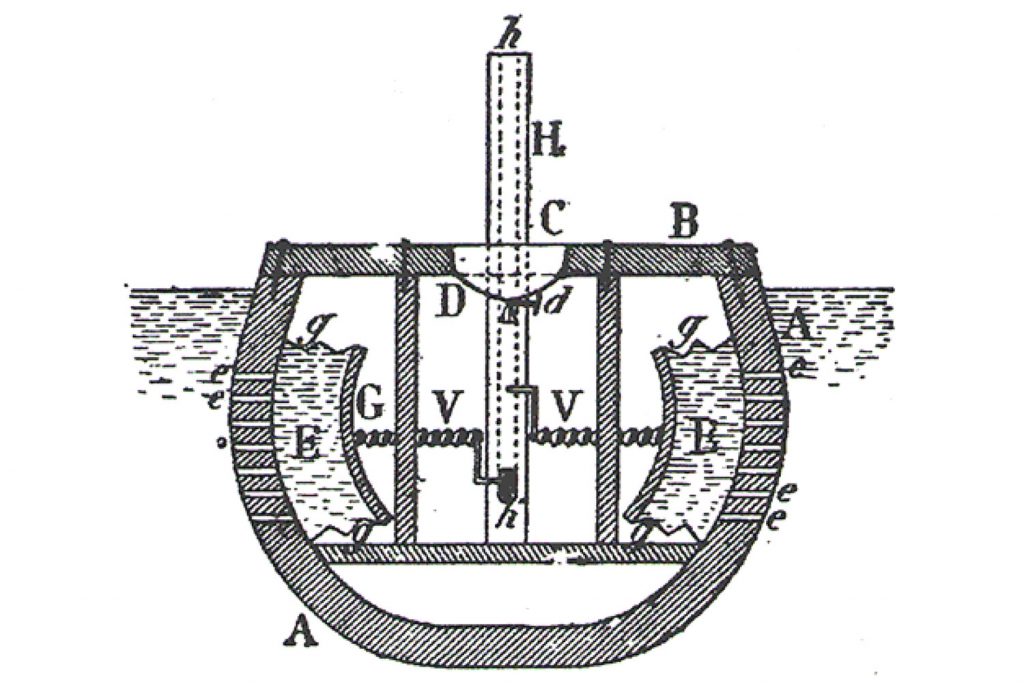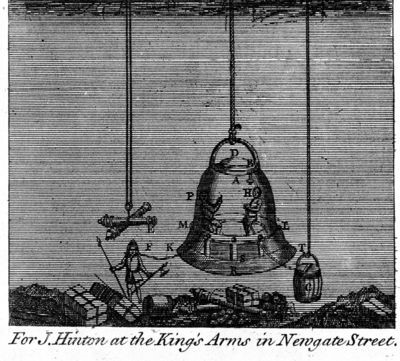Edmund Halley
In 1691, Edmund Halley reduced water pressure by attaching wooden barrels to the bell. At the bottom of them was a hole that allowed water to come in which forced the air up. At the top, a hose went from the barrel to a faucet head and divers could turn the faucet to allow air to come in. The barrels were pulled to the surface for "refilling," and dropped back in again. The divers could use this system to match the pressure outside the diving bell for it to stop collapsing in on itself.

